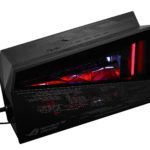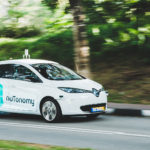An estimated one in five computers in Singapore encountered malicious software online between April and June last year, according to a regular study of cyber security threats released by Microsoft yesterday.
Singapore’s malware encounter rate came in at 19.4 per cent for the quarter, two percentage points lower than the global average and similar to markets with high IT maturity in the Asia-Pacific region, such as Australia, Hong Kong, Japan and South Korea.
These numbers stand in stark contrast to the 45 per cent experienced by nations such as Vietnam and Indonesia, a sobering reminder of the diverse cyber security landscape in the region.
A twice-yearly report that offers insights into online threats like vulnerabilities, malware and web-based attacks, Microsoft’s Security Intelligence Report also noted emerging Asia-Pacific markets accounted for three of the top five global spots for malware encounters.
The top five markets in the Asia-Pacific that faced malware threats are Mongolia, Vietnam, Pakistan, Indonesia, and Nepal and Bangladesh. Nepal and Bangladesh were grouped as a single market.
Malaysia is in 11th position, Singapore is 14th, while Hong Kong, South Korea, Australia, New Zealand and Japan took the 15th to 19th places.
“It generally takes up to 200 days for organisations to find out that they have been breached. (Companies need to invest in) “Protect-Detect-Respond” capabilities, (and) adopt trusted cloud-based services to enjoy the highest levels of data protection,” said Keshav Dhakad, regional director for the Digital Crimes Unit at Microsoft Asia.
The most commonly encountered malicious software categories in Singapore include:
• Trojans, which users pick up by a running a malicious executable file disguised as a legitimate piece of software, or from visiting a malicious site
• Worms, which exploits vulnerabilities in a computer network to copy themselves to other computers within a network chain
• Downloaders and droppers that installs malicious files onto a computer. The files may be included in its own executable, or downloaded from a remote server
Microsoft recommends several best practices for improving defence against cyber security threats:
• Ensure strong fundamentals: Use only genuine, current and updated software. IT assets which are old, unprotected, or are non-genuine substantially increase the chances for a cyber attack. For example, pirated and counterfeit software are known to come with embedded malware infections.
• Focus on cyber hygiene: Poor cyber hygiene of IT users, negligent employee behaviour or weak credentials/password protection within an organisation, adds a high degree of vulnerability for system compromise. With more and more personal devices being used at the workplace, the higher the chance they are infected.
• Have a data culture: Develop a big data analytics culture involving data classification, multi-factor authentication, encryption, rights management, machine learning for behavioural analytics and log analytics to spot user anomalies and irregular or suspicious patterns. They could provide potential clues in advance to prevent impending or ongoing security breaches.
• Invest in a robust cyber defence ecosystem and monitor all systems in real time: Invest in trusted security solutions and modern threat protection technologies to monitor, detect and remove common and advanced cyber threats in real time, while developing in-house expertise to undertake threat analytics.
• Regular assessment, review and audit: Be comprehensive on all aspects of cybersecurity, not just technology. Have a IT trusted supply chain across cloud, software, hardware, Internet of Things, BYOD (bring your own device) and regularly review and assess cybersecurity investments and performance of both software and hardware deployment, including customer and vendor access to the corporate network.






